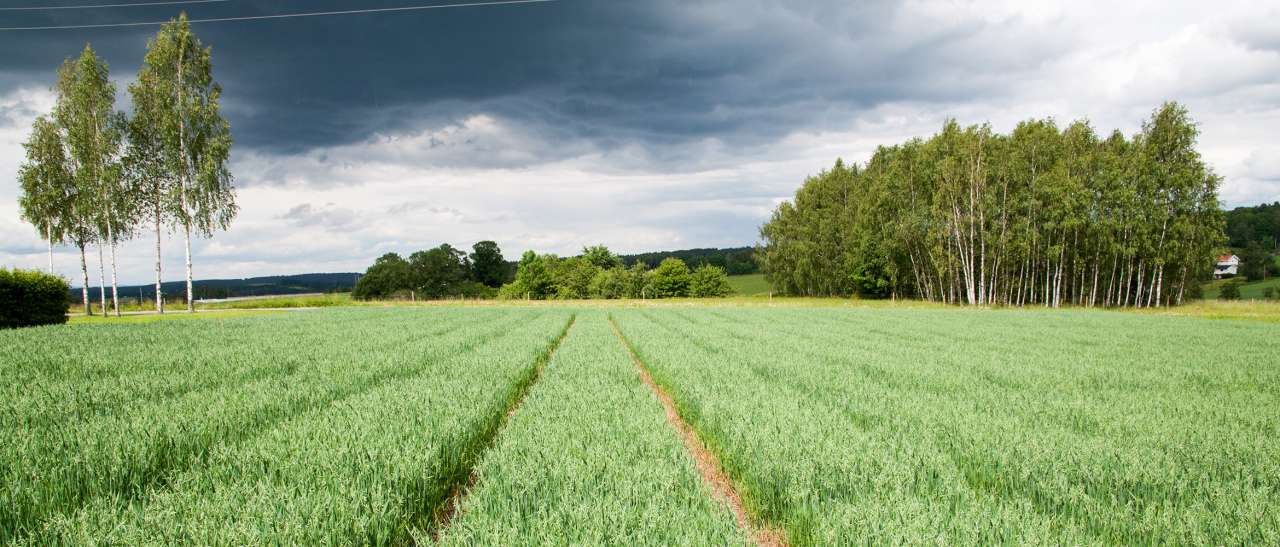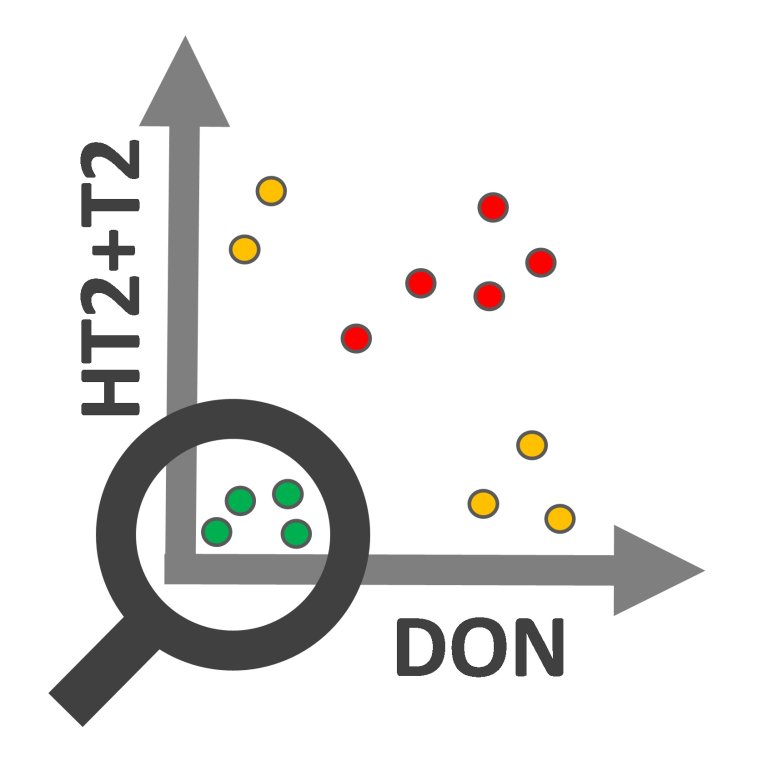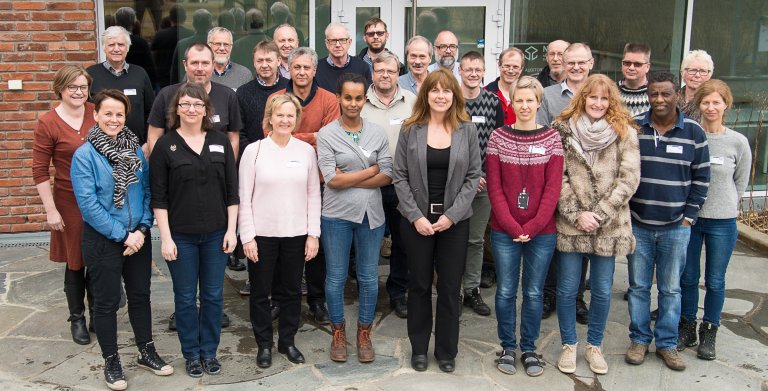Division of Biotechnology and Plant Health
SafeOats: Resistance to Fusarium langsethiae in Norwegian oats

End: dec 2020
Start: may 2016
Over the recent decades, the Norwegian cereal industry has had major practical and financial challenges associated with the occurrence of Fusarium and mycotoxins in cereal grains. From 2011, payment reductions to farmers were implemented for oat grain lots with high levels of deoxynivalenol (DON). However, according to preliminary results by Norwegian Institute of Bioeconomy Research (NIBIO), the Norwegian University of Life Sciences (NMBU) and the Norwegian plant breeding company, Graminor, certain oat varieties with generally medium or low DON contamination, may contain high levels of HT-2 and T-2-toxins (HT2+T2). These mycotoxins, formed by Fusarium langsethiae, are considerably more toxic than DON. The concentrations of HT2+T2 in Norwegian cereals were extraordinarily high in 2014, a year with growth conditions favouring development of HT2+T2. This coincided with a doubling of the market share for ‘Odal’, a variety ranked as especially prone to HT2+T2 in preliminary studies, but among the most resistant for F. graminearum and DON. Resistance to F. langsethiae is not included in the variety screening. SafeOats will develop resistance screening methods in collaboration with the main Norwegian and Swedish breeding companies, thus facilitating the phase-out of susceptible germplasm. The project will approach breeding by revealing gene expression pathways for Fusarium resistance in oats. Furthermore, SafeOats will provide information whether there are varietal differences concerning the content of mycotoxins in different size fractions of oat grains, and whether seed borne inoculum might be a source of F. langsethiae infections. SafeOats will give new insight into the biology of F. langsethiae and HT2+T2 accumulation in oats, and thus facilitate the choice of relevant control measures. The results from SafeOats will benefit consumers nationally and internationally by providing tools to increase the share of high quality grain into the food and feed industry.
Project participants
Aina Lundon Russenes Anne-Grete Roer Hjelkrem Åsmund Bjørnstad Simon G. Edwards Marit Almvik Selamawit Tekle Gobena Mauritz Åssveen Erik Lysøe Morten Lillemo Guro Brodal Heidi Udnes Aamot
Havreseminaret, 18. november 2020:
| Status | Concluded |
| Start - end date | 01.05.2016 - 31.12.2020 |
| Project manager | Ingerd Skow Hofgaard |
| Division | Division of Biotechnology and Plant Health |
| Department | Fungal Plant Pathology in Forestry, Agriculture and Horticulture |
| Total budget | 10700000 |

Publications in the project
Authors
Anne-Grete Roer Hjelkrem Heidi Udnes Aamot Morten Lillemo Espen Sannes Sørensen Guro Brodal Aina Lundon Russenes Simon G. Edwards Ingerd Skow HofgaardAbstract
No abstract has been registered
Abstract
No abstract has been registered
Abstract
No abstract has been registered
Authors
Ingerd Skow Hofgaard Morten Lillemo Heidi Udnes Aamot Marit Almvik Espen Sannes Sørensen Trond Buraas Bernd Rodemann Simon G. Edwards Guro BrodalAbstract
Occasionally, high mycotoxin levels are observed in Norwegian oat grain lots. The development of oat varieties with improved resistance to Fusarium and mycotoxins is therefore highly valued in order to increase the share of high quality grain into the food and feed industry. The Norwegian project “SafeOats” (2016-2020) aimed to develop resistance-screening methods to facilitate the phase-out of Fusarium-susceptible oat germplasm, as well as to give new insight into the biology of Fusarium langsethiae and HT2+T2 accumulation in oats. In naturally infested as well as in inoculated field trials, the relative ranking of oat varieties according to Fusarium graminearum/DON content did not resemble the ranking according to F. langsethiae/HT2+T2 content. One variety regarded as moderate resistant to Fusarium according to studies of DON content, was susceptible to F. langsethiae and thus at high risk for HT2+T2 contamination. Screening of resistance to F. langsethiae/HT2-T2 should therefore be routinely applied in breeding programs in addition to the already established screening of resistance to F. graminearum/DON. The incidence of F. langsethiae in a selection of oat seed lots used for commercial sowing showed a similar ranking of varieties as in the field trials. On average, the fungus was observed on 5% of the kernels in 168 seed lots tested during 2016-2018. No indication of transmission of F. langsethiae from germinating seed to seedling was found in a study with germination of naturally infected seeds. We investigated whether removing of small kernels by size sorting could be a method to reduce the content of mycotoxins in oat grain. For several of the mycotoxins including HT2+T2, the concentrations were considerably higher in the small kernel fraction compared to unsorted grain. Our results demonstrate that the level of mycotoxins in unprocessed oat grain can be reduced by removing small kernels. The results from SafeOats will benefit consumers nationally and internationally by providing tools to increase the share of high quality grain into the food and feed industry. The project was financed by The Agriculture and Food Industry Research Funds /Research Council of Norway with support from the industry partners Graminor, Lantmännen, Felleskjøpet Agri, Felleskjøpet Rogaland & Agder, Fiskå Mølle Moss, Norgesmøllene, Strand Unikorn/Norgesfôr and Kimen Seed Laboratory.
Abstract
No abstract has been registered
Abstract
No abstract has been registered
Abstract
Fra bukkefôr og husmannskost til urban hipstermat; havre har vært en viktig komponent i kosthold og fôr i generasjoner. Men noen havresorter er mer sårbare for soppgifter enn andre. Dyrking av mer resistente sorter kan redusere risikoen for soppgifter i mat og fôr.
Abstract
No abstract has been registered
Authors
Ingerd Skow Hofgaard Heidi Udnes Aamot Morten Lillemo Guro Brodal Erik Lysøe Marit Almvik Anne-Grete Roer Hjelkrem Mauritz Åssveen Aina Lundon Russenes Einar Strand Åsmund Bjørnstad Helge Skinnes Selamawit Tekle Espen Sannes Sørensen Trond Buraas Alf Ceplitis Birgitte Henriksen Bernd Rodemann Simon G. EdwardsAbstract
Occasionally, high mycotoxin levels are observed in Norwegian oat grain lots. The development of moderate resistant oat cultivars is therefore highly valued in order to increase the share of high quality grain into the food and feed industry. The Norwegian SafeOats project (2016-2020) aims to develop resistance screening methods to facilitate the phase-out of Fusarium-susceptible oat germplasm. Furthermore, SafeOats will give new insight into the biology of F. langsethiae and HT2+T2 accumulation in oats. The relative ranking of oat varieties according to F. graminearum/DON versus F. langsethiae/HT2+T2 content has been explored in naturally infested as well as in inoculated field trials. Routine testing of the resistance to F. graminearum in oat cultivars and breeding lines has been conducted in Norway since 2007. We are currently working on ways to scale up the inoculum production and fine tune the methodology of F. langsethiae inoculation of field trials to be routinely applied in breeding programs. Through greenhouse studies, we have analysed the content of Fusarium DNA and mycotoxins in grains of selected oat varieties inoculated at different development stages. Furthermore, we are studying the transcriptome during F. langsethiae and F. graminearum infestation of oats. The project also focus on the occurrence of F. langsethiae in oat seeds and possible influence of the fungus on seedling development in a selection of oat varieties. On average, the fungus was observed on 5% of the kernels in 168 seed lots tested during 2016-2018. No indication of transmission of F. langsethiae from germinating seed to seedlings was found in a study with germination of naturally infected seeds. So far, the studies have shown that the ranking of oat varieties according to HT2+T2 content in non-inoculated field trials resembles the ranking observed in inoculated field trials. The ranking of oat varieties according to DON content is similar in non-inoculated and F. graminearum inoculated field trials. However, the ranking of oat varieties according to DON content does not resemble the ranking for HT2+T2. The results from SafeOats will benefit consumers nationally and internationally by providing tools to increase the share of high quality grain into the food and feed industry. The project is financed by The Foundation for Research Levy on Agricultural Products/Agricultural Agreement Research Fund/Research Council of Norway with support from the industry partners Graminor, Lantmännen, Felleskjøpet Agri, Felleskjøpet Rogaland & Agder, Fiskå Mølle Moss, Norgesmøllene, Strand Unikorn/Norgesfôr and Kimen Seed Laboratory.
Authors
Heidi Udnes Aamot Ingeborg Klingen Simon Edwards May Bente Brurberg Toril Eklo Hege Særvold Steen Jafar Razzaghian Elisa Gauslaa Ingerd Skow HofgaardAbstract
The plant pathogenic fungus Fusarium langsethiae produces the highly potent mycotoxins HT-2 and T-2. Since these toxins are frequently detected at high levels in oat grain lots, they pose a considerable risk for food and feed safety in Norway, as well as in other north European countries. To reduce the risk of HT-2/T- 2-contaminated grain lots to enter the food and feed chain, it is important to identify factors that influence F. langsethiae infection and mycotoxin development in oats. However, the epidemiology of F. langsethiae is unclear. A three-year survey was performed to reveal more of the life cycle of F. langsethiae and its interactions with oats, other Fusarium species, as well as insects, mites and weeds. We searched for inoculum sources by quantifying the amount of F. langsethiae DNA in crop residues, weeds, and soil sampled from a selection of oat-fields. To be able to define the onset of infection, we analysed the amount of F. langsethiae DNA in oat plant material sampled at selected growth stages (between booting and maturation), as well as the amount of F. langsethiae DNA and HT-2 and T-2 toxins in the mature grain. We also studied the presence of possible insect- and mite vectors sampled at the selected growth stages using Berlese funnel traps. The different types of materials were also analysed for the presence F. graminearum DNA, the most important deoxynivalenol producer observed in Norwegian cereals, and which presence has shown a striking lack of correlation with the presence of F. langsethiae in oat. Results show that F. langsethiae DNA may occur in the oat plant already before heading and flowering. Some F. langsethiae DNA was observed in crop residues and weeds, though at relatively low levels. No Fusarium DNA was detected in soil samples. Of the arthropods that were associated with the collected oat plants, aphids and thrips species were dominating. Further details will be given at the meeting.
Abstract
No abstract has been registered
Authors
Ingerd Skow HofgaardAbstract
No abstract has been registered
Abstract
Over the recent decades, the Norwegian cereal industry has had major practical and financial challenges associated with the occurrence of Fusarium and mycotoxins in cereal grains. From 2011, payment reductions to farmers were implemented for oat grain lots with high levels of deoxynivalenol (DON). However, according to preliminary results by NIBIO, NMBU and Graminor, certain oat varieties with generally medium or low DON contamination, may contain high levels of HT-2 and T-2-toxins (HT2+T2). These mycotoxins, formed by Fusarium langsethiae, are considerably more toxic than DON. Resistance to F. langsethiae is not included in the variety screening in Norway. In 2016 a new project, SafeOats, was initiated. This project is led by NIBIO and is a collaboration between NIBIO, NMBU, Kimen, and the main Norwegian and Swedish breeding companies, Graminor and Lantmännen. Harper Adam University (UK) and Julius Kühn-Institut (Germany) are international collaborators. SafeOats will develop resistance screening methods in order to facilitate the phase-out of susceptible oat germplasm. Furthermore, SafeOats will give new insight into the biology of F. langsethiae and HT2+T2 accumulation in oats, and thus facilitate the choice of relevant control measures. The results from SafeOats will benefit consumers nationally and internationally by providing tools to increase the share of high quality grain into the food and feed industry. SafeOats is financed by The Foundation for Research Levy on Agricultural Products/Agricultural Agreement Research Fund/Research Council of Norway with support from the industry partners Graminor, Lantmännen, Kimen, Felleskjøpet Agri, Felleskjøpet Rogaland Agder, Fiskå Mølle Moss, Norgesmøllene and Strand Unikorn/Norgesfor.
Authors
Heidi Udnes Aamot Ingeborg Klingen Simon G. Edwards May Bente Brurberg Guro Brodal Toril Eklo Hege Særvold Steen Jafar Razzaghian Elisa Gauslaa Ingerd Skow HofgaardAbstract
No abstract has been registered
